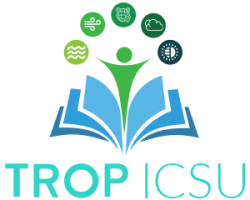Teaching Differentiating Functions through Solar Energy Data

Teaching Differentiating Functions through Solar Energy Data Classroom/Laboratory Activity A classroom/ laboratory activity titled, ‘Country Photovoltaic Energy Production’ from Sustainability Math by Thomas J. Pfaff, Ithaca College, USA, to teach differentiating functions – logistic and exponential, using a hands-on computer-based classroom activity that includes data of photovoltaic (solar) energy production of several countries from 1990 […]
Differential Calculus using Methane Data

Differential Calculus using Methane Data Classroom/Laboratory Activity A classroom/laboratory activity for Mathematics teachers to teach about Differential Calculus, specifically, about polynomial differentiation focusing on Tangent Line Problem and Curve Fitting. This activity contains yearly data of the globally averaged marine surface methane from 1984 to 2019. Methane is a major contributor to greenhouse gas emissions […]
Climate Change in the Maths and Statistics Classroom

Climate Change in the Maths and Statistics Classroom Video A video lecture by Rahul Chopra, TROP ICSU and IISER Pune on climate change educational resources that Mathematics and Statistics teachers can use in their classrooms. These educational resources integrate climate change understanding with the core curriculum in Mathematics and Statistics. This video lecture is part […]
Using Polynomial Differentiation to Analyze Global Atmospheric CO2

Using Polynomial Differentiation to Analyze Global Atmospheric CO2 Classroom/Laboratory Activity A classroom/laboratory activity to learn and apply polynomial differentiation and to solve tangent line problems for global average CO2 data. Students will observe the trend in increasing atmospheric CO2 levels, infer when atmospheric CO2 levels could cause global temperatures to increase by 2 °C (potentially […]
Using Introductory Calculus (Integration) to Analyze CO2 Emission Data

Using Introductory Calculus (Integration) to Analyze CO2 Emission Data Classroom/Laboratory Activity A classroom/laboratory activity to analyze CO2 emissions data by using Riemann sums for the calculation of area under the curve. Students will use calculus and compare CO2 emissions for the U.S. and China, based on emission and population data for the period 1980-2015. They […]
Analyzing Climate Science Data through Simple Statistical Techniques

Analyzing Climate Science Data through Simple Statistical Techniques Teaching Module A teaching module that demonstrates the use of linear and quadratic regression to analyze Arctic sea ice extent data and the use of graphs, sample correlations, and multiple regression to analyze atmospheric CO2 level data, solar irradiance data, and average global temperature data. In the […]
Build Climate Models using Python

Build Climate Models using Python Online Course An e-learning course to create climate models in Python through hands-on programming exercises. Students will use Python to model energy balance; ice-albedo feedback; ice sheet dynamics; and pressure, rotation, and fluid flow. Use this tool to help your students find answers to: Derive the parameterized relationship between T, […]
Climate Change: The Math Connection

Climate Change: The Math Connection Video A video lecture by Chris Budd, University of Bath titled ‘The Mathematics of Climate Change’ that discusses how mathematics helps in understanding the Earth’s climate, climate change and in predicting future climate change. This video focuses on how climate models are derived from the fields of Mathematics and Physics. […]
Climate Change Mathematics

Climate Change Mathematics Reading A reading by Chris Budd, University of Bath titled ‘The Mathematics of Climate Change’ that discusses the use of mathematical concepts and techniques to address climate change. The reading demonstrates the use of mathematical modelling, probability, statistics, dynamical systems theory and scientific computing to understand global warming, loss of ice, sea […]
Human Health, Vector-Borne Diseases, and Climate Change

Human Health, Vector-Borne Diseases, and Climate Change Video This video gives an overview of Climate and Health, and especially about the vector-borne diseases. /p> /p> About Tool Tool Name Human Health, Vector-Borne Diseases, and Climate Change Discipline Biology Topic(s) in Discipline Human Health, Vector-Borne Diseases Climate Topic Climate and Health Type of tool Video Grade […]


